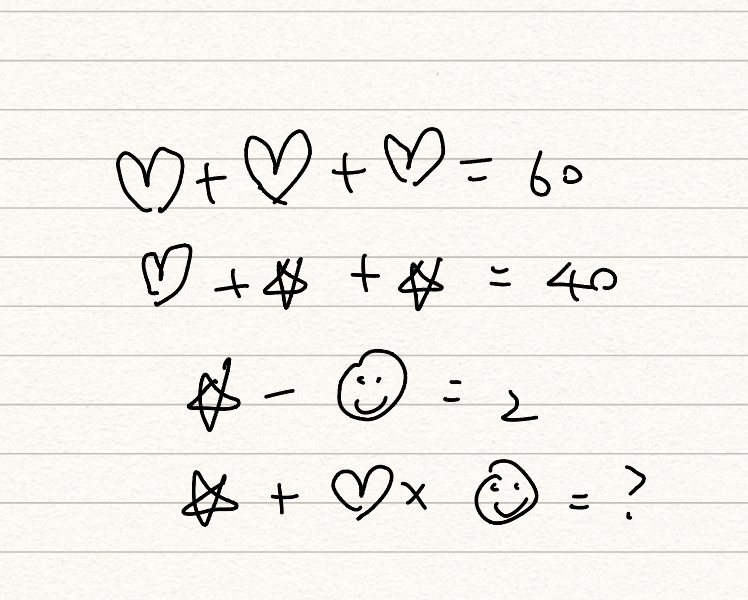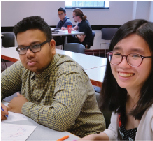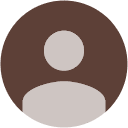What is BEDMAS?
BEDMAS is basically an acronym that helps us to understand and remember as to what order to follow when solving a complex mathematical equation.
This not only makes things more systematic but also makes them simpler.
Lets begin with breaking the acronym down

So your first order of business is going to be solving whatever is in the bracket

After brackets we solve exponents

After solving exponents we divide whatever needs to be divided

After dividing we multiply

After multiplying we add

After adding we subtract
These all operations can be found together in a given equation or individually, but the order remains the same. If one of the operations is not present you skip it and move to the next one.
Examples of BEDMAS
Explanation:
We first solved the bracket- in the bracket we also followed BEDMAS by doing addition before subtraction. Once the bracket is solved we do division as that is the next thing after brackets. After that we are left with simple subtraction.
Explanation:
According to BEDMAS, brackets come first so we deal with the bracket. BEDMAS is also applied to the bracket itself so we deal with the bracket within it. Inside the bracket we first multiple and then subtract. Once the smaller bracket is solved we divide in the bigger bracket and then multiply it with -1 to get rid of the bracket. Then the next thing is division, after dividing 24 by 6 we multiply it with -2 and then finally subtract to get the answer.
Explanation:
According to BEDMAS, brackets come first so we deal with the bracket. BEDMAS is also applied to the bracket itself so we deal with the exponents in both the brackets. Once that is done we divide in the first bracket (25/5) and we subtract in the second (5-4). Then we multiply in the first bracket to get rid of both the brackets. Finally, we subtract to get the answer.
Now it's your turn to try.
Practice Problems for BEDMAS
Evaluate each expression.

Tricks to remember BEDMAS
This sentence might be helpful for students to remember BEDMAS:
Big Elephants Destroy Mice and Snails
But this is not the only one.
You can build your own sentences and find your way to remember the order of BEDMAS operations. Don’t be shy. Every sentence is perfect as long as that can make you remember the acronym and the meaning behind it.
If you are using basic calculators to do the calculation, just follow the BEDMAS calculation orders to enter numbers. It will be easy to master once you practiced it more often.
Do you know what is the next level? Try to apply BEDMAS on spreadsheets. If you think you are already comfortable calculating with BEDMAS, challenge yourself to use BEDMAS on spreadsheets. Spreadsheets have more formulas, functions, and computational opportunities for you to use. It will make your life easier than using calculators once you get it.
Since our goal is to understand the meaning behind the acronym, here are some things to help you remember.
1. BEDMAS is known as an order of operations in Algebra
2. Another way to call it: PEMDAS

History of BEDMAS:
Achilles Reselfelt was the first mathematician who invented a sketchy BEDMAS in the late 1800s, but the order of operation has been developed for a long time. No one would say they invented BEDMAS entirely by themselves. Since the main goal of the BEDMAS creation is to simplify notation and make your life easier, the development would also be working toward that goal. The order of operations we saw today is the effort made by several generations.
At first, people got to know the math system because they needed to count everything daily. Then, they got tired of it and tried to figure out a shortcut. They started to think about why they couldn’t add products together instead of counting them one by one, so the addition was born. After that, people realized that they also needed an operation to undo addition. Subtraction appeared and was used oppositely to counter the effects of addition.
However, people felt that addition and subtraction were not smart enough after a while. They came up with an idea: Why don’t we do multiplication to calculate faster, so we don’t need to add numbers repeatedly? At the same time, the division is also invented to operate in an opposite way.
Based on the same logic, exponents, and roots appear, making people calculate even faster.
As we can see, exponents and roots are the fastest shortcuts people invented over time. That’s why we have the order exponents and roots -> multiplication and division -> addition and subtraction.
Understanding BEDMAS better - here is a video to help you
Imagine a Life Without BEDMAS
- Why is 2+5*3 equal to 17 instead of 21?
- Why is (10-5) *2 equal to 10 instead of 0?
- Why is 5-(3+2) equal to 0 instead of 4?
Do you think our life will be a mess without BEDMAS as guidance?
Imagine you put shirts on your legs, wear pants on top, and put shoes on your head. Do you think that’s the same case that would happen in calculating operations without BEDMAS guidance?
Common mistakes on calculating BEDMAS
The correct answer should be 23. We are supposed to multiply 5 and 4 first and add 3. But the common mistake here is most students will add 3 and 5 first and multiply 8 by 4, leading to the wrong answer 32.
The correct answer should be 49. Do you know why you got 25? Because you ignored the bracket. Keep in mind that the bracket is very important to show the priority when multiplication/division and adding/subtraction appear together. In this question, we have to add 3 and 4 first since they are in the bracket. Then multiply 7 by 7, getting the answer 49.
BEDMAS Games/Puzzles
Can You Solve This BEDMAS Question?

Explanation:
Since three hearts equal 60, we can apply the division function into the equation (60/3), so it will be 20 for each heart. Substitute 20 into the second equation.
20 plus two stars equal 40, so it will be 10 for each star. Moving to the third equation, since we already know that the star is 10, the smiling face will equal 8.
Then, we can substitute the number into different shapes, the star is 10, the heart is 20, and the smiling face is 8. Therefore, the star pluses heart multiplied smile face will be 10+20*8, equal to 170.
BEDMAS - fun games references
These two are fun BEDMAS games that are worth to give it a try. This is your chance to apply BEDMAS into games. They will help you get familar with the operation of BEDMAS. HAVE FUN!
https://mrnussbaum.com/drag-n-drop-math-online
https://www.transum.org/Maths/Game/BIDMAS/
If you are bored, here is an entertaining song of order of operations can help you know BEDMAS better

Take Home Points for BEDMAS
• Make sure you remember that every bracket within a bracket also operates in the order of BEDMAS.
• The order has to be followed according to the acronym BEDMAS and cannot be switched.
• Make sure you remember your integer rules as to what happens when you divide, add, multiply or subtract two negative terms or vice versa.
One on One Private Tutoring
Grade 5 to 8 Math. English Writing, Science.
Grade 9 , 10 Math. English. Science.
Grade 11, 12 Math, Advanced Functions, Calculus, Chemistry, Biology, Physics. English.
Queen Elizabeth Academy’s Private Tutoring Program provides our students with one on one, personalized tutoring lessons that are based on a step by step, easy to understand methodology.
Semi private Actual lesson.
Our Approach of Tutoring
At QEA, we focus on tutoring the students and build his or her foundation and understanding. Our tutoring approach facilitates independent thinking, so that our students can analyze the questions properly. Our tutors go through math and science lessons step by step, and make sure that you have a firm foundation before they move onto more complex math and science concepts.
For our science and math tutoring programs, we focus on providing step by step explanations during the tutoring session, facilitating the student’s understanding of the math and science concepts.
Math and science are cumulative. Therefore, building a good foundation is important for the student’s long-term success. In our math and science tutoring, we focus on clarifying the student’s knowledge gaps to help them build a good foundation in math and science.
Our tutors will categorize types of problems and organize knowledge making it easier for students to retain

Teaches: English grade 5 to 12
PhD Candidate, English literature
Writing Course Director, Guelph-Humber University
Harvard University
Queen Elizabeth Advisor
Designed Learning Strategies for our courses.
Teaches: Calculus, Advanced Functions, Physics
PhD Candidate, University of Toronto
Taught university math tutoring classes for 2+ years
Teaches: Advanced Functions
1200+ hours of tutoring experience. Specialized in making complex concepts easy to understand

Teaches: Calculus, Grade 9-12 Math
Certified Teacher, Mathematics.
6 years of university teaching experience as a TA

Queen's University, Canada
Major in chemistry
3+ years of teaching experience including university level and high school level chemistry
Queen Elizabeth Academy!

Victor is excellent at communicating with parents and students and he is also very good at listening and acting on everyones feedback. Highly recommend QEA!!read more
FAQ on BEDMAS
Answer: An acronym for mathematical order of operations. Starting with B, stands for brackets, E stands for exponents, followed by D-division, M-multiplication, ends by A-addition and S-subtraction.
Answer: Both acronyms are correct. In France and United States, PEMDAS is more common. The only difference between these phrases is the first letter. P stands for parathesis, while B stands for bracket.
Answer: BEDMAS is commonly taught in the grade 5th or 6th. Learning BEDMAS will help students solve more complicated mathematical questions and have a better understanding of algebraic concepts in the future.
Answer: Yes. BEDMAS represents the order of operation in math. It will be hard to solve complex algebraic questions without the BEDMAS rule. Therefore, it is very important for students to understand and learn BEDMAS.
Follow the rule of BEDMAS, multiplication needs to be calculated before adding. Technically, if you want to do multiplication before adding, you don’t need to add bracket to show the priority. It is default to prioritize multiplication over adding.
Honestly, the order between division and multiplication doesn’t matter, but the BEDMAS says to divide first and then to multiply.
at your neighbourhood
*Note that Queen Elizabeth Academy offers in class learning at our Mississauga location, at Unit 5, 1020 Johnson’s Lane. The rest of the locations we offer credits online via Zoom (TM) with live teaching.








































